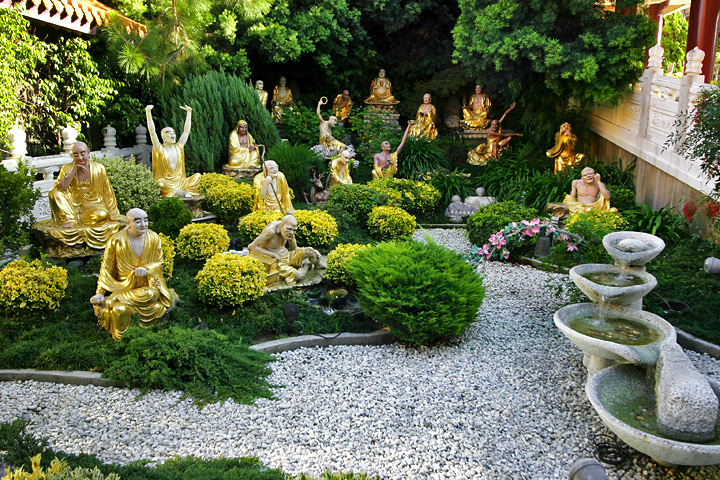|
Hội Khánh Temple
Hội Khánh Temple (, Chữ Hán: 會慶寺) is an historic Buddhist temple built in 1741 in the town of Thủ Dầu Một, Bình Dương Province in southern Vietnam. The temple was initially built on a prominent hill, but in 1861 it was destroyed in fighting as the French colonial army underwent the process of colonising southern Vietnam. The temple was rebuilt by Thích Chánh Đắc at the foot of the hill, around 100 m south of the original site. The temple currently is located at 35 Yersin Street, in Phú Cường ward, in the town of Thủ Dầu Một, north of Bình Dương. Geography The temple is located only 150 m away from the road. Beyond the triple gates inscribed with depictions of dragons and phoenixes, the temple lies on a quiet plot of land, with many trees, in particular, four eucalyptus trees more than a century old that were planted shortly after the temple was rebuilt. The temple has been refurbished and expanded many times, but retains i ... [...More Info...] [...Related Items...] OR: [Wikipedia] [Google] [Baidu] |
Chữ Hán
( , ) are the Chinese characters that were used to write Literary Chinese in Vietnam, Literary Chinese (; ) and Sino-Vietnamese vocabulary in Vietnamese language, Vietnamese. They were officially used in Vietnam after the Red River Delta region was incorporated into the Han dynasty and continued to be used until the early 20th century. Terminology The main Vietnamese term used for Chinese characters is (). It is made of meaning 'character' and 'Han (referring to the Han dynasty)'. Other synonyms of includes ( , literally 'Confucianism, Confucian characters') and ( ) which was borrowed directly from Chinese. was first mentioned in Phạm Đình Hổ's essay ( ), where it initially described a calligraphic style of writing Chinese characters. Over time, however, the term evolved and broadened in scope, eventually coming to refer to the Chinese script in general. This meaning came from the viewpoint that the script belonged to followers of Confucianism. This is further s ... [...More Info...] [...Related Items...] OR: [Wikipedia] [Google] [Baidu] |
Arahant
In Buddhism, an ''Arhat'' () or ''Arahant'' (, 𑀅𑀭𑀳𑀦𑁆𑀢𑁆) is one who has gained insight into the true nature of existence and has achieved '' Nirvana'' and has been liberated from the endless cycle of rebirth. The understanding of the concept has changed over the centuries, and varies between different schools of Buddhism and different regions. A range of views on the attainment of arhats existed in the early Buddhist schools. The Sarvāstivāda, Kāśyapīya, Mahāsāṃghika, Ekavyāvahārika, Lokottaravāda, Bahuśrutīya, Prajñaptivāda, and Caitika schools all regarded arhats as imperfect in their attainments compared to buddhas.Sree Padma. Barber, Anthony W. ''Buddhism in the Krishna River Valley of Andhra''. 2008. p. 44Warder, A.K. ''Indian Buddhism''. 2000. p. 277 Mahayana Buddhist teachings urge followers to take up the path of a bodhisattva, and to not fall back to the level of arhats and śrāvakas. The arhats, or at least the sen ... [...More Info...] [...Related Items...] OR: [Wikipedia] [Google] [Baidu] |
Religious Buildings And Structures Completed In 1917
Religion is a range of social system, social-cultural systems, including designated religious behaviour, behaviors and practices, morals, beliefs, worldviews, religious text, texts, sanctified places, prophecies, ethics in religion, ethics, or religious organization, organizations, that generally relate humanity to supernatural, transcendence (religion), transcendental, and spirituality, spiritual elements—although there is no scholarly consensus over what precisely constitutes a religion. It is an essentially contested concept. Different religions may or may not contain various elements ranging from the divine, sacredness, faith,Tillich, P. (1957) ''Dynamics of faith''. Harper Perennial; (p. 1). and a supernatural being or beings. The origin of religious belief is an open question, with possible explanations including awareness of individual death, a sense of community, and dreams. Religions have sacred histories, narratives, and mythologies, preserved in oral traditions, sac ... [...More Info...] [...Related Items...] OR: [Wikipedia] [Google] [Baidu] |


